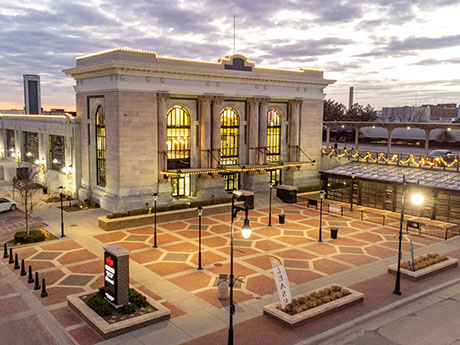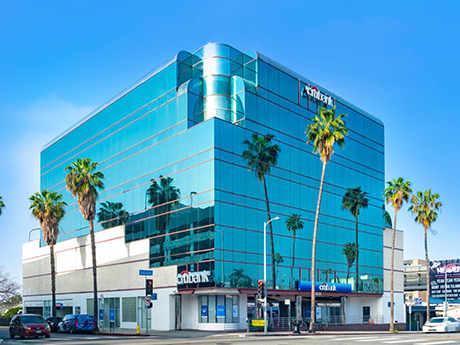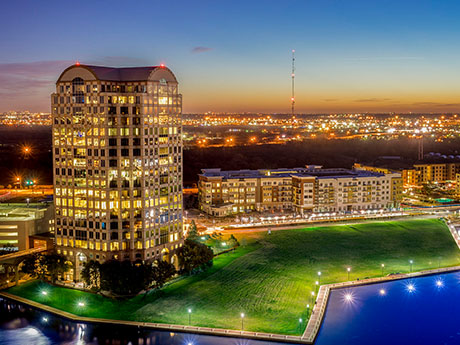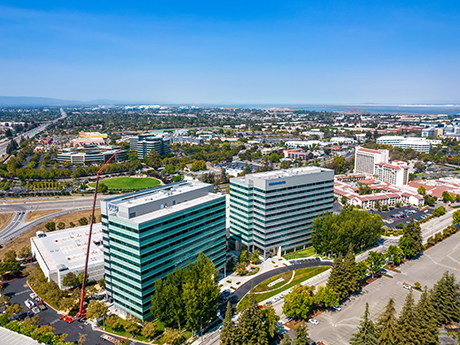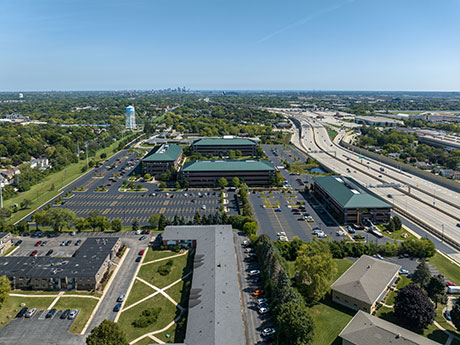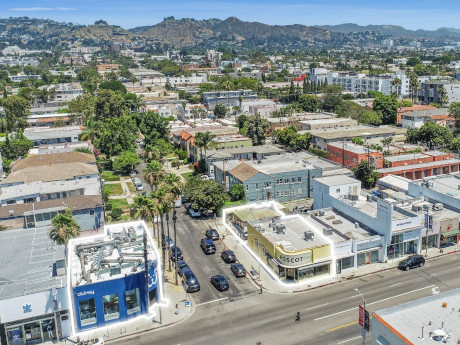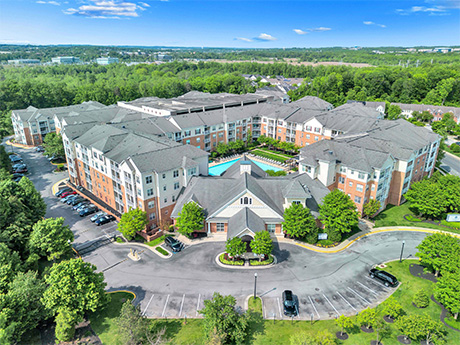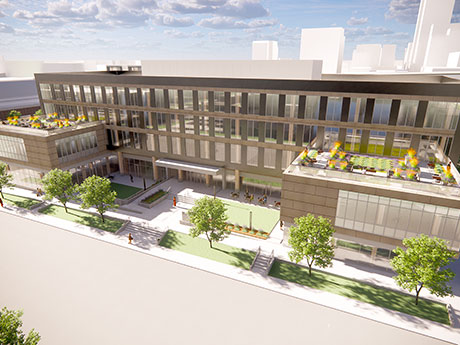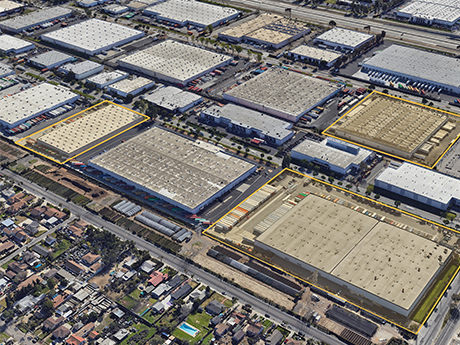By Bob Ale-Ebrahim, Occidental Management Wichita has seen significant growth in the commercial real estate market for two years in a row. There have been sizable investments in downtown, new industrial campuses, medical offices and higher education institutions. These projects are spurring strong momentum in downtown Wichita. Wichita is a thriving hub of social, professional and cultural experiences with 350 new residential units under development with over 120 unique retailers and 4.1 million square feet of occupied office space. Add in the solid job growth, and Wichita continues to show significant signs of a solid and expanding economy. Projects recently completed include the WSU Tech National Institute for Culinary & Hospitality Education (NICHE), The Hudson St. Francis (event space), The Arcade and the Chester I. Lewis Reflection Square Park. Projects under construction include Hi-Tone Lofts, Sutton Place student housing and the Broadway Plaza AC Marriott Hotel. Projects in the planning stage are street improvements at Commerce and St. Francis streets, the Wichita Biomedical Campus, Wichita Transit multimodal facility, ballpark/riverfront stadium development, Exploration Place amphitheater and destination playscape, Delano Riverfront Stadium project and the Kingdom Building. Wichita’s economic development generated more than $418 million in capital investment in 2023 alone. Remarks …
Market Reports
— By Taylor Stokes, Market Intelligence Analyst, Avison Young — The Los Angeles office market continues to struggle with a 24.7 percent vacancy rate at the end of the first quarter of 2024, according to Avison Young’s first-quarter Los Angeles office market report. Leasing activity picked up slightly in the first quarter of 2024 with 951 leases recorded. This equated to 3.5 million square feet, up 5.4 percent from the fourth quarter of 2023 when there were 902 leases signed. To put the decline of occupancy in perspective, the first quarter of 2022 ended with a 15.4 percent office vacancy rate, which was up from 15 percent at the end of 2021. It was also up from the previous high of 13.1 percent that was recorded in 2010. There were a couple lease transactions to highlight in the first quarter of 2024. Snap picked up 400,000 square feet in Santa Monica, while Bank of Tokyo Mitsubishi signed a nearly 62,000-square-foot lease in Downtown Los Angeles. Downtown continues to struggle with the highest vacancy in the market at 28.6 percent. The anticipated return to office hasn’t happened, as many users see the hybrid work schedule continuing for the long-term. They, therefore, …
By Brett Merz, senior vice president of asset management, KBS Texas was one of the first states to experience the return of employees to the office post-pandemic. That trend continues today. Even as work-from-home and hybrid work become further entrenched in some parts of the country, Texas still leads the nation in terms of employees coming into the office. According to Kastle’s Workplace Barometer, office properties in Dallas, Houston and Austin have occupancy rates during peak times that are 10 percent higher than the national average. Kastle’s data cuts across all building classes, but in our experience, mid-week occupancy at our Class A office properties in Texas is even stronger. Kastle’s data and our experience contrast with the negativity surrounding the office market and point to the potential for greater opportunity throughout 2024 and beyond. According to JLL’s local market office reports for major Texas cities, vacancy rate increases are slowing down. With new construction in Dallas and Austin trending down, as well as zero new construction in San Antonio and Houston, occupancy rates may begin to grow through the rest of the year. Additionally, rents for Class A buildings are either stable or have seen slight increases over the …
— By Kirsten Grado, Toss Vallentine and Wing Lee of JLL — The resilience of the South Bay/Silicon Valley economy has been tested with the dramatic change in hybrid work formats that enabled employees to work from anywhere. While office vacancy has hit near record levels over the past year, signs of strengthening fundamentals are pointing to a bottoming of the market and a period of opportunity for companies and investors with long-term views. So, what is marking the signs of optimism? Leasing activity has continued to improve as companies in technology, professional services, financial services/consulting and other sectors leased 865,000 square feet across 61 transactions in the first quarter of 2024. The largest leases were PwC agreeing to move from downtown San Jose into 141,000 square feet within the top three floors of One Santana West, as well as a confidential tech firm leasing 162,000 square feet at Coleman Highline, also in San Jose. Other notable leases were TDK InvenSense renewing its 82,000-square-foot space in San Jose, as well as KMPG and the 49ers organization each taking about 50,000 square feet of space in new leases in Santa Clara. Premier space remains in high demand as companies look to …
By Matt Hock, NAI Greywolf In the active landscape of Milwaukee’s commercial real estate market, several trends are reshaping the way businesses, both tenants and landlords, approach office spaces. From the enduring impact of remote work to the changing preferences of tenants, the market is currently witnessing a focus on quality, adaptability and talent retention. Flight to quality persists While the market continues to see the flight to quality we have experienced for the past few years, the Milwaukee office sector is now also experiencing what has been termed as “competing with the couch.” Companies are battling the challenge of bringing employees back to the office and with that they are looking to solve this issue with providing spaces that offer more than your standard office setup. Basically, they are looking for amenities and features within the office that entice workers to come back, compared with what remote workers have with their home office setup. So, competing with the comforts of home, or the couch, in these cases. This has catalyzed a “flight to quality,” where businesses are investing in premium office spaces designed to enhance the overall employee experience. In effort to attract and retain top talent, companies are …
— By Gary Baragona, Vice President of Research, Kidder Mathews — Home to an eclectic mix of local retailers, award-winning restaurants and the world’s most prestigious brands, Los Angeles has long been one of the most dynamic retail markets in the country. However, sector dynamics significantly shifted during the pandemic as retailers began to rely heavily on their online sales to stay in business and remain profitable. While consumer preferences further evolved in 2022 and 2023, there has been a noticeable slowdown in consumer spending, largely due to ongoing economic challenges, reduced buying power, decreased savings and increased credit card debt. On the surface, overall market fundamentals within the commercial real estate retail sector appear to be relatively stable. Some key indicators illustrate market resiliency, but other trends demonstrate the recent struggles felt by the retail sector and the challenges that may lie ahead. For example, total leasing activity across the Los Angeles region was down 15 percent in 2023 compared to the previous year, and down 25 percent compared to pre-COVID averages. The total vacancy rate across Los Angeles increased to 5.3 percent during the first quarter of 2024 and has consistently hovered between 5 percent and 5.3 percent …
By Christine Espenshade of Newmark Baltimore is an often-overlooked gem of a city along the Northeast Corridor between Washington, D.C., and New York City. This waterfront town is home to two major sports teams, a world-class symphony and art museums that rival those in the best cities around the world. Baltimore is more often referenced as the location for various crime TV shows rather than being known as home to two of the top medical facilities in the world — Johns Hopkins Hospital and the University of Maryland Medical System — Johns Hopkins University, and headquarters for famous companies such as Under Armour, T. Rowe Price and McCormick Spices. The multifamily market in Baltimore is also often overlooked by investors in favor of larger cities. However, to spur the development of top-quality rental products, Baltimore City and Baltimore County offer lucrative property tax abatements for new developments. The region continually sees consistent population growth due to the “eds and meds” nature of the economy, and the lower cost of living when compared to D.C. or Philadelphia attracts a well-educated workforce looking to enjoy the live-work-play lifestyle. The popularity of Baltimore for employers and employees is evident when considering the 35,000 …
— By Edward F. Del Beccaro, Executive Vice President, TRI Commercial — The major Northern California industrial markets contain a total of more than 860 million square feet of industrial buildings. The San Francisco Bay Area, North Bay, Silicon Valley, Sacramento and Central Valley have all experienced a falloff in tenant demand from 2021 to 2022 pandemic highs. Most markets experienced negative absorption in fourth-quarter 2023, including sublease space coming on the market that resulted in rents either plateauing or decreasing. Nevertheless, the outlook is still positive based on the various economic drivers pushing the market. For instance, manufacturers are benefitting from onshoring, with a projected 40 percent reduction in sourced material from China, per a recent report from Alix Partners. In addition, declining interest rates and continuing inflation will cause institutional money to flow into the industrial sector versus the office sector, according to a March 2024 ProLogis report. Below are various industrial submarket reviews: In the Oakland/East Bay Industrial I-80/880 Corridor, year-end 2023 experienced a slowdown in demand due to new construction and existing space becoming available. More than 10.2 million square feet is available, reflecting negative absorption of more than 778,000 square feet last year. The Port …
By Kristi Andersen and Melissa Torrez, CBRE The office market remains one of the most uncertain commercial real estate sectors across the country. Facing declining asset values, rising interest rates and the increase of remote and hybrid work, many of the nation’s office markets are struggling. Key indicators that typically track the health of the market include net absorption, rental rates and vacancy rates. Not surprisingly, given the recent challenges, net absorption of office space nationwide is currently negative, rents have gone down and vacancy is high. However, Omaha continues to buck those trends. A solid, steady economy The midwestern city boasts a diverse economy with agriculture, food processing, insurance, transportation, healthcare and education all being leading drivers. Warren Buffett calls Omaha home, as do several Fortune 500 corporations such as Berkshire Hathaway, Union Pacific Railroad, Mutual of Omaha and Peter Kiewit Sons’ Inc. The Omaha economy consistently outperforms other metro areas, particularly during economic downturns. In December, the U.S. Bureau of Economic Analysis released 2022 Gross Domestic Product (GDP) data for counties and metropolitan areas. Douglas County, the most populous county in Nebraska, had the highest annual GDP growth at 9.2 percent for U.S. counties with populations greater than …
— By Robert Peddicord, Executive Managing Director, CBRE South Bay — The Greater Los Angeles (GLA) industrial market is showing stability while enduring challenges like higher vacancy rates, negative absorption and an anticipated decrease in lease rates. Markets across the country continue to adjust post-pandemic, and GLA is no exception. Nevertheless, the GLA industrial market is poised for long-term resilience, thanks, in part, to its proximity to the ports of Los Angeles and Long Beach, while LA’s large population base drives the need for warehousing. San Pedro Bay Ports The GLA industrial market continues to rely on the San Pedro Bay ports, the two largest ports by volume in the U.S. Although there has been an average decrease of 1.9 percent in cargo volume over the past five years, the San Pedro Bay terminal operators and dockworkers moved 16.6 million TEUs (twenty-foot equivalent units) in 2023, outpacing the TEUs moved at other ports. Disruptions from the Suez and Panama canals may divert more U.S.-bound cargo ships from Asia to West Coast ports. The West Coast benefits from lower shipping container costs, with about a 40 percent discount shipping to the West Coast compared to the East Coast. U.S. importers, shippers …


